
Tallinn is the most populous, primate, and capital city of Estonia. Situated on a bay in north Estonia, on the shore of the Gulf of Finland of the Baltic Sea, Tallinn has a population of 444,532 and administratively lies in the Harju maakond (county). Tallinn is the main financial, industrial, and cultural centre of Estonia. It is located 187 km (116 mi) northwest of the country's second largest city Tartu, however only 80 km (50 mi) south of Helsinki, Finland, also 320 km (200 mi) west of Saint Petersburg, Russia, 300 km (190 mi) north of Riga, Latvia, and 380 km (240 mi) east of Stockholm, Sweden. From the 13th century until the first half of the 20th century, Tallinn was known in most of the world by variants of its other historical name Reval.

The Octopus card is a reusable contactless stored value smart card for making electronic payments in online or offline systems in Hong Kong. Launched in September 1997 to collect fares for the territory's mass transit system, the Octopus card system is the second contactless smart card system in the world, after the Korean Upass, and has since grown into a widely used payment system for all public transport in Hong Kong, leading to the development of Navigo card in Paris, Oyster Card in London, Opal Card in New South Wales, NETS FlashPay and EZ-Link in Singapore and many other similar systems around the world.
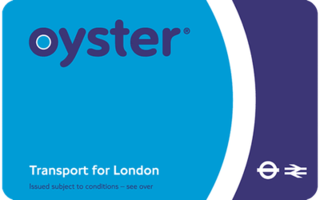
The Oyster card is a payment method for public transport in London in the United Kingdom. A standard Oyster card is a blue credit-card-sized stored-value contactless smart card. It is promoted by Transport for London (TfL) and can be used on travel modes across London including London Buses, London Underground, the Docklands Light Railway (DLR), London Overground, Tramlink, some river boat services, and most National Rail services within the London fare zones. Since its introduction in June 2003, more than 86 million cards have been used.

Nagu is a former municipality and parish of Finland. On 1 January 2009, it was consolidated with Houtskär, Iniö, Korpo and Pargas to form the new town of Väståboland. On 1 January 2012 the name Väståboland was changed to Pargas.

The EasyCard is a contactless smartcard system operated by the EasyCard Corporation, which was previously named the "Taipei Smart Card Corporation", for payment on the Taipei Metro, buses, and other public transport services in Taipei since June 2002, expanded to multiple place of business. Its use has also since been expanded to include convenience stores, department stores, supermarkets, taxis, and other retailers since 1 April 2010. Like conventional electronic fare systems, the card employs RFID technology to operate without physical contact. They are available for purchase at all Metro stations and all chain convenience stores.

Fares to use the Toronto Transit Commission (TTC) transit system in Toronto, Ontario, Canada, can be paid with various media. The price of fares varies according to age, occupation, income level of riders.

An airport lounge is a facility operated at many airports. Airport lounges offer, for selected passengers, comforts beyond those afforded in the airport terminal itself, such as more comfortable seating, quieter environments, and often better access to customer service representatives. Other accommodations may include private meeting rooms, telephones, wireless internet access and other business services, along with provisions to enhance passenger comfort, such as free drinks, snacks, magazines, and showers.

The Navigo card, formerly called the Navigo pass, is a means of payment for public transportation introduced on 1 October 2001 in the City of Paris and Île-de-France region. It is implemented as a contactless smart card using the Calypso standard, initially with Radio-frequency identification (RFID), then Near-field communication (NFC) since 9 December 2013, and enables authenticated access at turnstiles by scanning the card at an electronic reader. Since July 2018, the payment, loading of season or single tickets and their validation at turnstiles is directly possible with a smartphone.

The Shanghai Public Transportation Card (SPTC) is a contactless card, utilizing RFID technology, which can be used to access many forms of public transport and related services in and around Shanghai.

A ticket is a voucher that indicates that an individual is entitled to admission to an event or establishment such as a theatre, amusement park or tourist attraction, or has a right to travel on a vehicle, such as with an airline ticket, bus ticket or train ticket. An individual typically pays for a ticket, but it may be free of charge. A ticket may serve simply as proof of entitlement or reservation. A ticket may be valid for any seat or for a specific one.
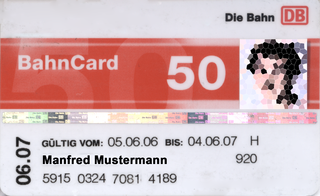
BahnCard is a discount subscription programme offered by Deutsche Bahn (DB), the German national railway company. Unlike airline loyalty programs, but similarly to the UK Railcard, the BahnCard entitles the passenger to a discount price and must be purchased prior to travel. The BahnCard is offered in a non-business and a business version called BahnCard Business. Non-business BahnCard contracts are automatically renewed each year, unless they are cancelled with sufficient notice. Three variants of BahnCard are sold by Deutsche Bahn: The BahnCard 25, the BahnCard 50, and the Mobility BahnCard 100. The first two variants allow passengers to get 25% and 50% discount respectively on standard long-distance rail fares, while the Mobility BahnCard 100 is a type of annual ticket that allows free unlimited travel on most of the German railway network for a fixed price. The (non-business) BahnCard 25/50 are valid for one year and can only be purchased by subscription. If they are not canceled no later than six weeks before the expiry date, their term is automatically extended by another year. BahnCard Business 25/50 are also valid for one year but require no cancellation. In contrast to the personal BahnCard, BahnCard Business can be combined with the discount that is granted to large-volume business customers.
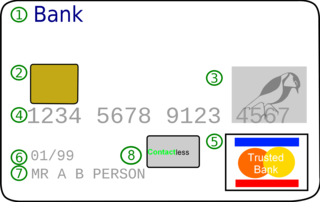
A credit card is a payment card issued to users (cardholders) to enable the cardholder to pay a merchant for goods and services based on the cardholder's accrued debt. The card issuer creates a revolving account and grants a line of credit to the cardholder, from which the cardholder can borrow money for payment to a merchant or as a cash advance. There are two credit card groups: consumer credit cards and business credit cards. Most cards are plastic, but some are metal cards, and a few gemstone-encrusted metal cards.

Public transport in Tallinn consists of bus, tram, trolleybus, train and ferry services. Bus, tram and trolleybus routes are mainly operated by Tallinna Linnatranspordi AS. Electric train services are offered by Elron and the ferry service to Aegna island is operated by Kihnu Veeteed.
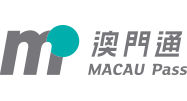
The Macau Pass is a contactless smartcard, first introduced by Transmac in 1999, that can be used to pay for bus fares, shop, and dine with many more merchants to join the system.

Public transport in Bratislava is managed by Dopravný podnik Bratislava, a city-owned company. The transport system is known as Mestská hromadná doprava, and the network is the largest in Slovakia. The history of public transportation in Bratislava began with the opening of the first tram route in 1895, when the city was in the Kingdom of Hungary, part of the Austro-Hungarian empire. Passengers must buy their tickets before entering the vehicle. Revenue from tickets covers approximately 40% of expenses, with the other 60% paid by the city.

Sauraha is a village of Ratnanagar Municipality in Chitwan District and Chitwan Valley, in Bagmati Province of southern Nepal.
The European Youth Card allows reductions on cultural activities, shops, transport, eating out and accommodation, and can be used in 38 European countries. Most countries make it possible to buy and use the card up to the age of 30. The card is usually issued for one year.

Opal is a contactless fare collection system for public transport services in the greater Sydney area and most other urban areas of New South Wales, Australia. Operation of the Opal system is managed by the New South Wales Government's transport authority, Transport for NSW. First launched in late 2012, Opal is valid on Transport for NSW's metro, train, bus, ferry and light rail services that operate in Sydney and the neighbouring Central Coast, Hunter Region, Blue Mountains, Illawarra and Southern Highlands areas. Opal equipment was designed from the start to support a variety of cards, but launched with the captive Opal cards.

The TFI Leap Card is a contactless smart card for automated fare collection overseen by Transport for Ireland (TFI). It was introduced in the Greater Dublin area in 2011 for Luas, DART, Iarnród Éireann and Dublin Bus, but acceptance has significantly expanded. Initially, Leap Cards offered only a pre-paid electronic wallet system for single-trip fares; since May 2014, it has also been possible to load it with weekly, monthly and annual subscriptions. In September 2017, there were over 2.5 million Leap Card users according to the National Transport Authority. The Leap Card is the result of many years' work by the Railway Procurement Agency and the National Transport Authority as part of the rollout of an integrated ticketing scheme for public transport in Dublin city. Fares are generally discounted compared to cash prices, and limited integrated ticketing is offered via multi-trip discounts and daily fare caps. The minimum top-up for the card is currently €5.
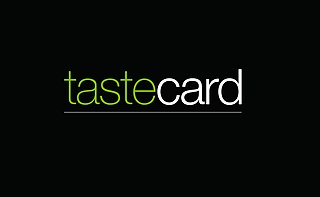
tastecard is a discount card accepted by many restaurants in the UK and Ireland offering in some cases a 50% discount, in others two meals for the price of one at participating restaurants; details and restrictions vary from restaurant to restaurant and are listed on the website. The card is the same size as a credit card; a "digital card" on a smartphone is available to cardholders for convenience.


















